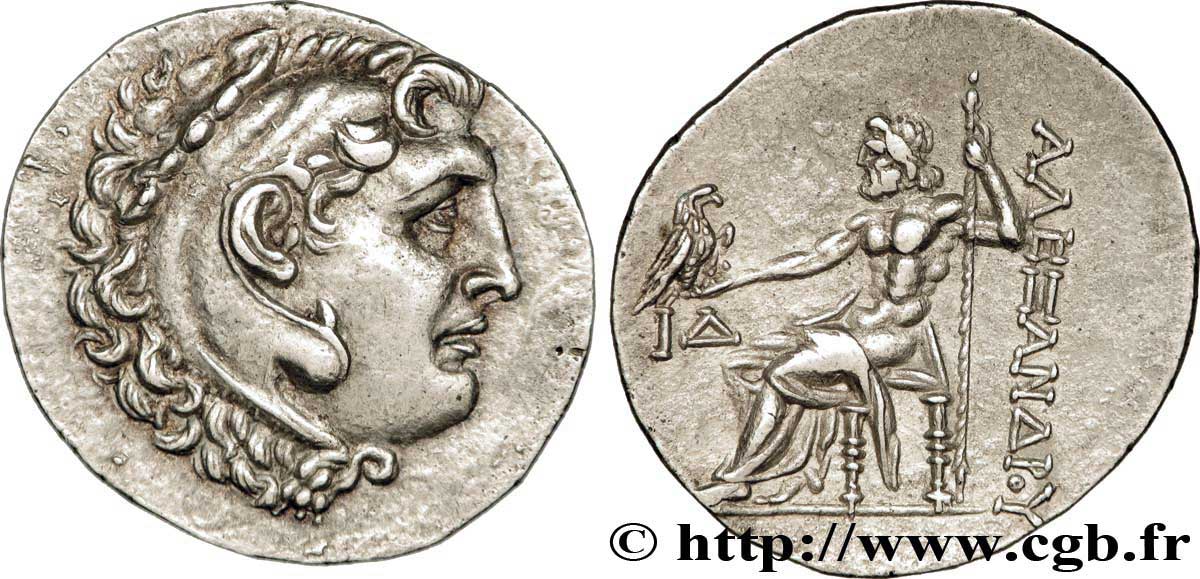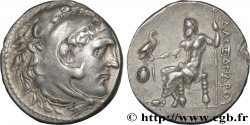v51_0240 - PAMPHYLIA - PERGA Tétradrachme
MONNAIES 51 (2011)
Starting price : 450.00 €
Estimate : 750.00 €
Realised price : 650.00 €
Number of bids : 7
Maximum bid : 951.00 €
Starting price : 450.00 €
Estimate : 750.00 €
Realised price : 650.00 €
Number of bids : 7
Maximum bid : 951.00 €
Type : Tétradrachme
Date: an 14
Mint name / Town : Pamphylie, Pergé
Metal : silver
Diameter : 31 mm
Orientation dies : 12 h.
Weight : 16,74 g.
Rarity : R2
Coments on the condition:
Exemplaire de qualité exceptionnelle sur un flan large et ovale, parfaitement centré des deux côtés. Portrait de toute beauté. Revers de haut relief. Belle patine de collection ancienne avec des reflets dorés. Conserve la plus grande partie de son brillant de frappe et de son coupant d’origine
Catalogue references :
Predigree :
Cet exemplaire provient de la vente Lanz 62, 26 novembre 1992, n° 383
Obverse
Obverse legend : ANÉPIGRAPHE.
Obverse description : Tête d'Héraklès à droite, coiffée de la léonté, nouée sous le cou.
Reverse
Reverse description : Zeus aétophore assis à gauche sur un trône sans dossier, les jambes croisées, nu jusqu'à la ceinture, tenant un aigle posé sur sa main droite et un long sceptre bouleté de la gauche.
Reverse legend : ALEXANDROU/ ID.
Reverse translation : (d’Alexandre).
Commentary
Tétradrachme au nom et au type d’Alexandre III le Grand (336-323 avant J.-C.) posthume. Mêmes coins que l’exemplaire du Staatliche Museen de Berlin (Colin, p. 19, n° 4/9a (A/ 4 -R/ 9a), pl. 4. C’est le deuxième exemplaire signalé pour cette combinaison de coin.








 Report a mistake
Report a mistake Print the page
Print the page Share my selection
Share my selection Ask a question
Ask a question Consign / sell
Consign / sell
 Full data
Full data

